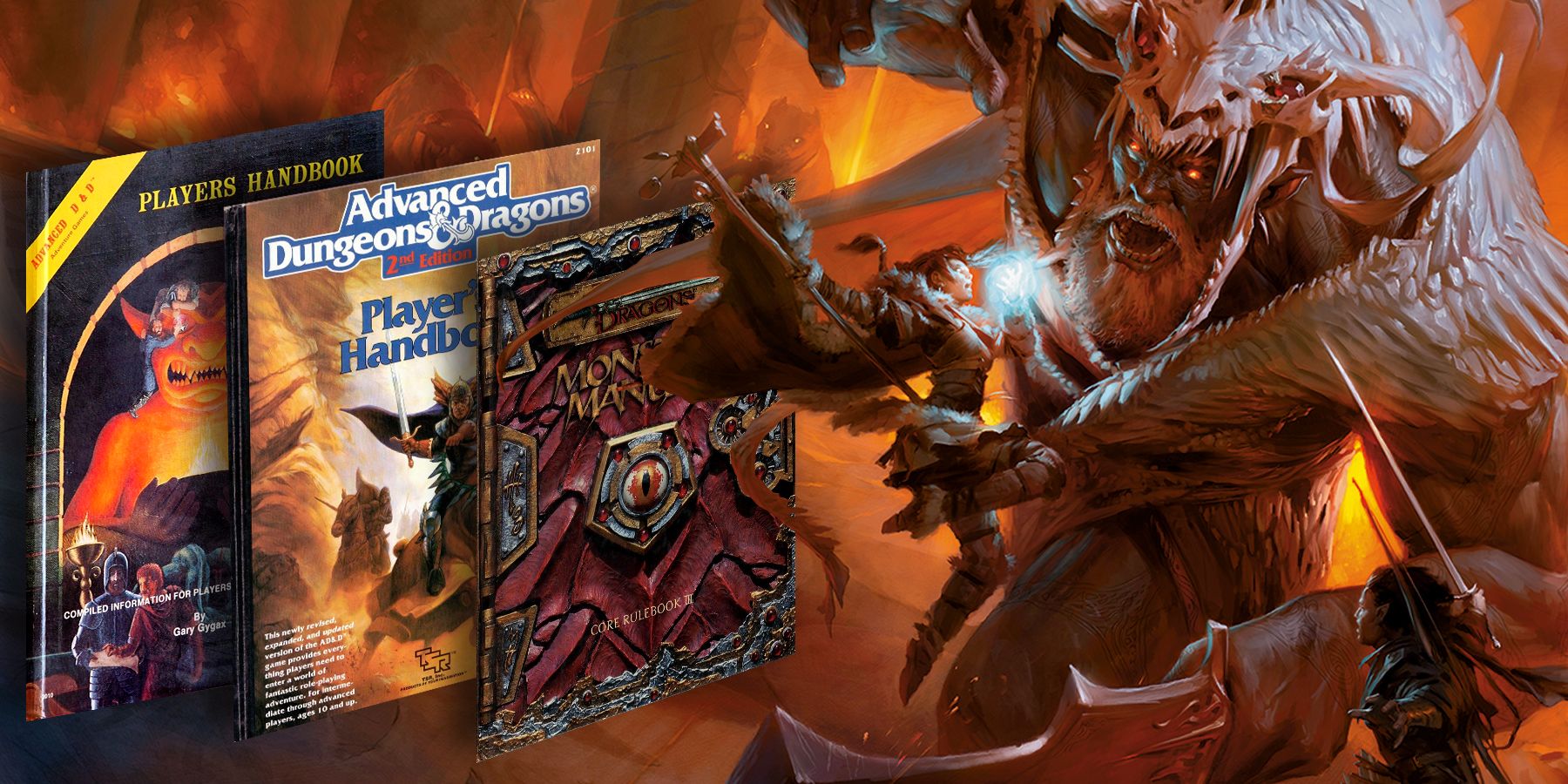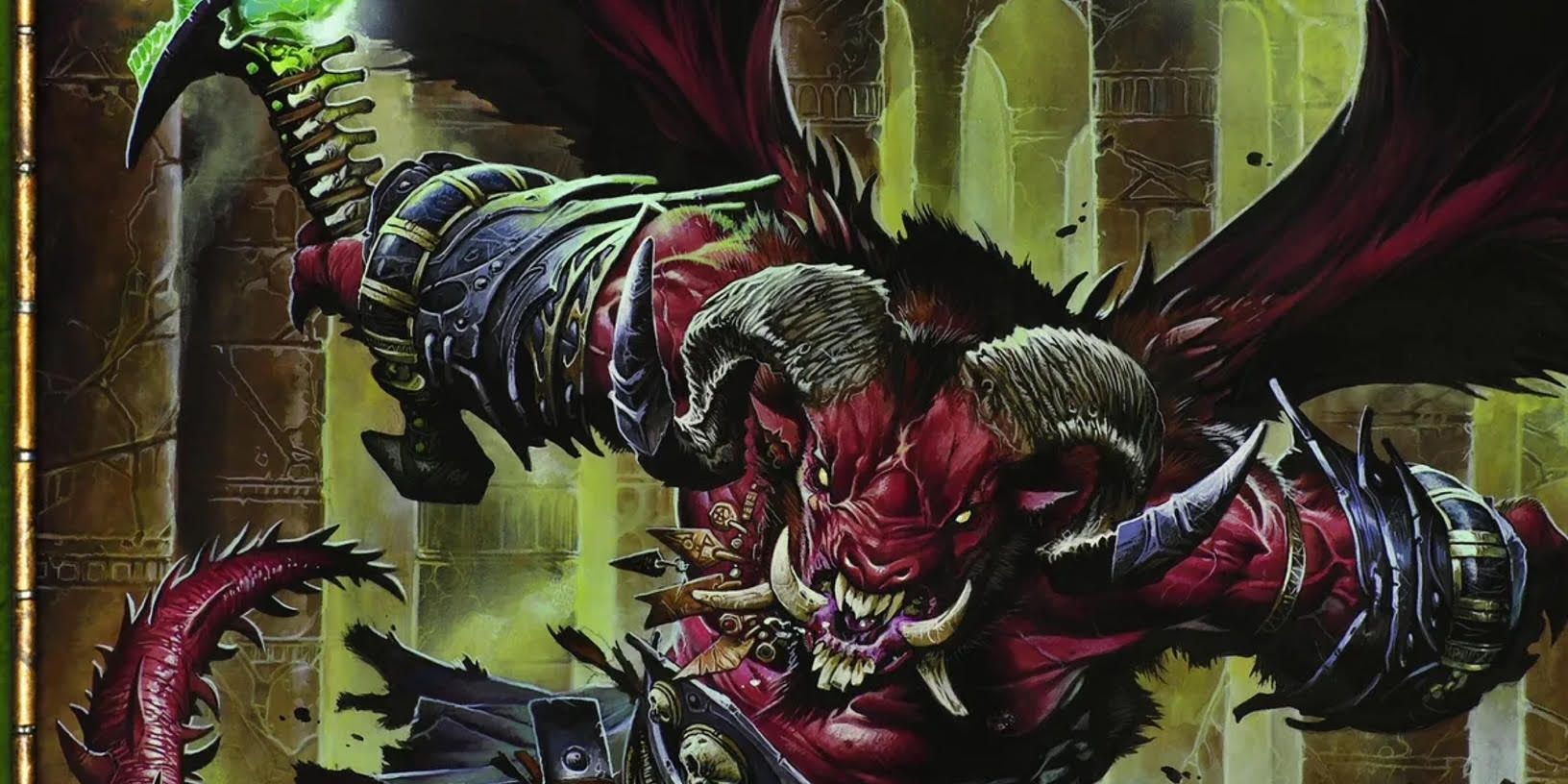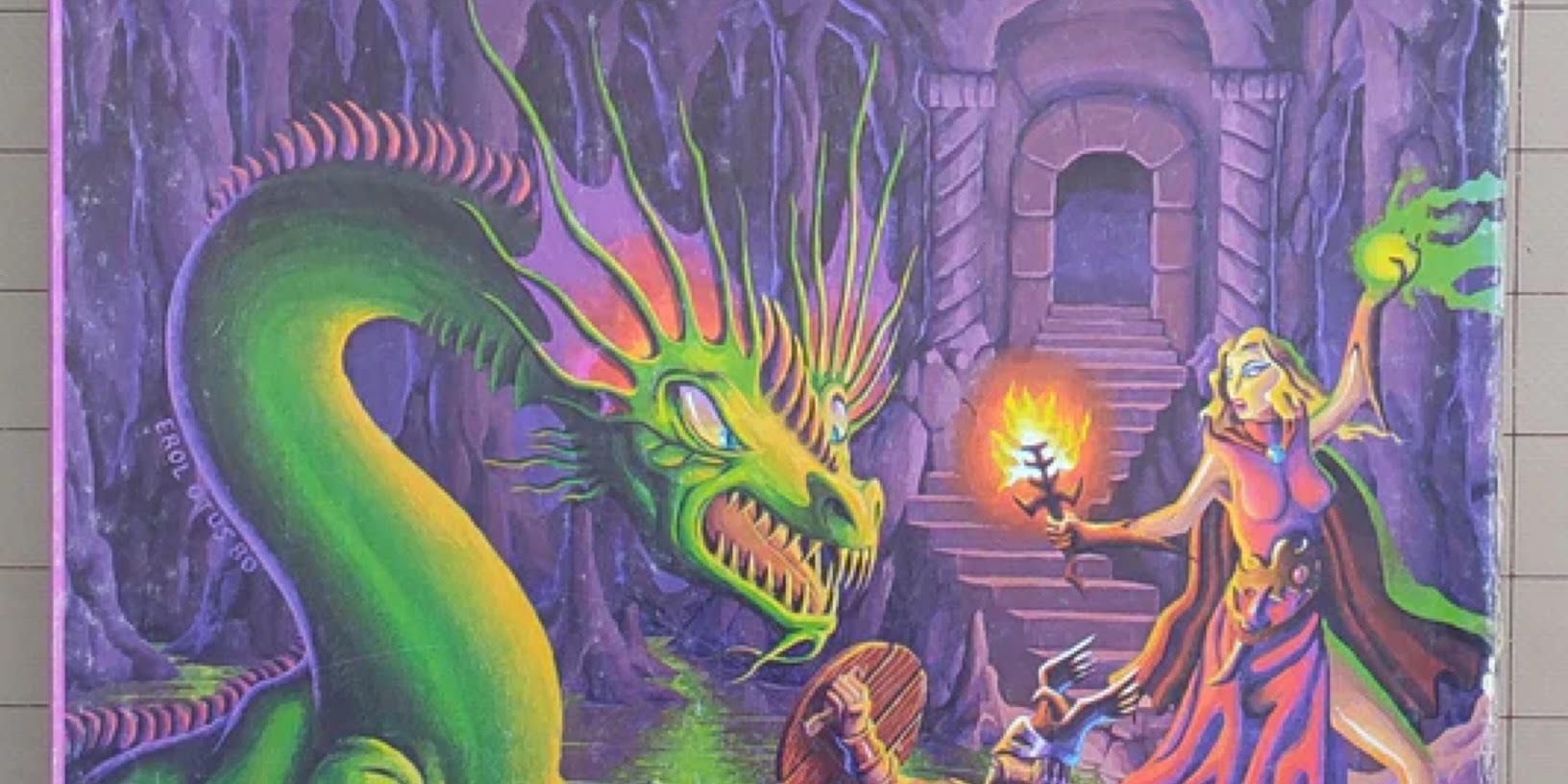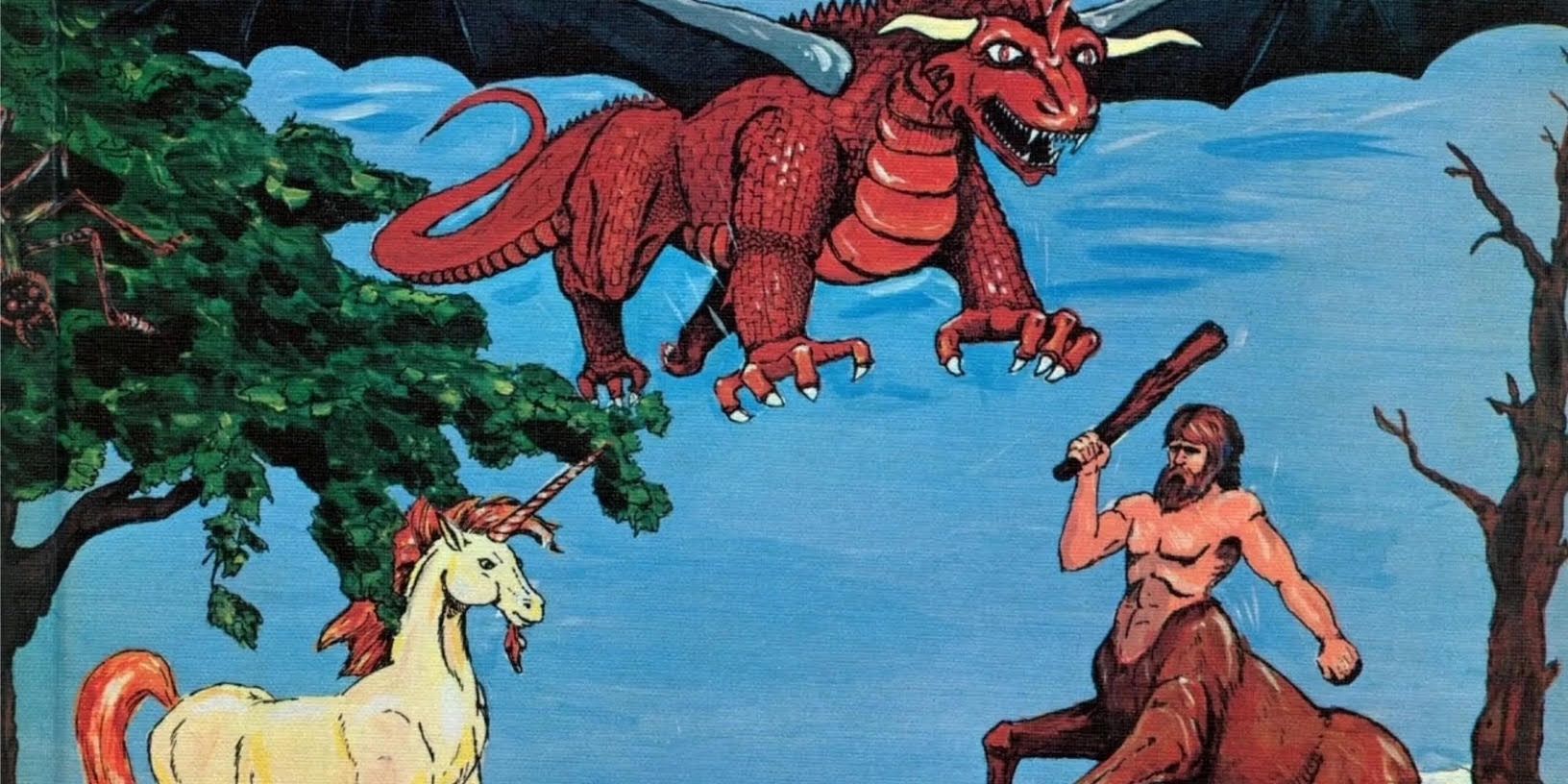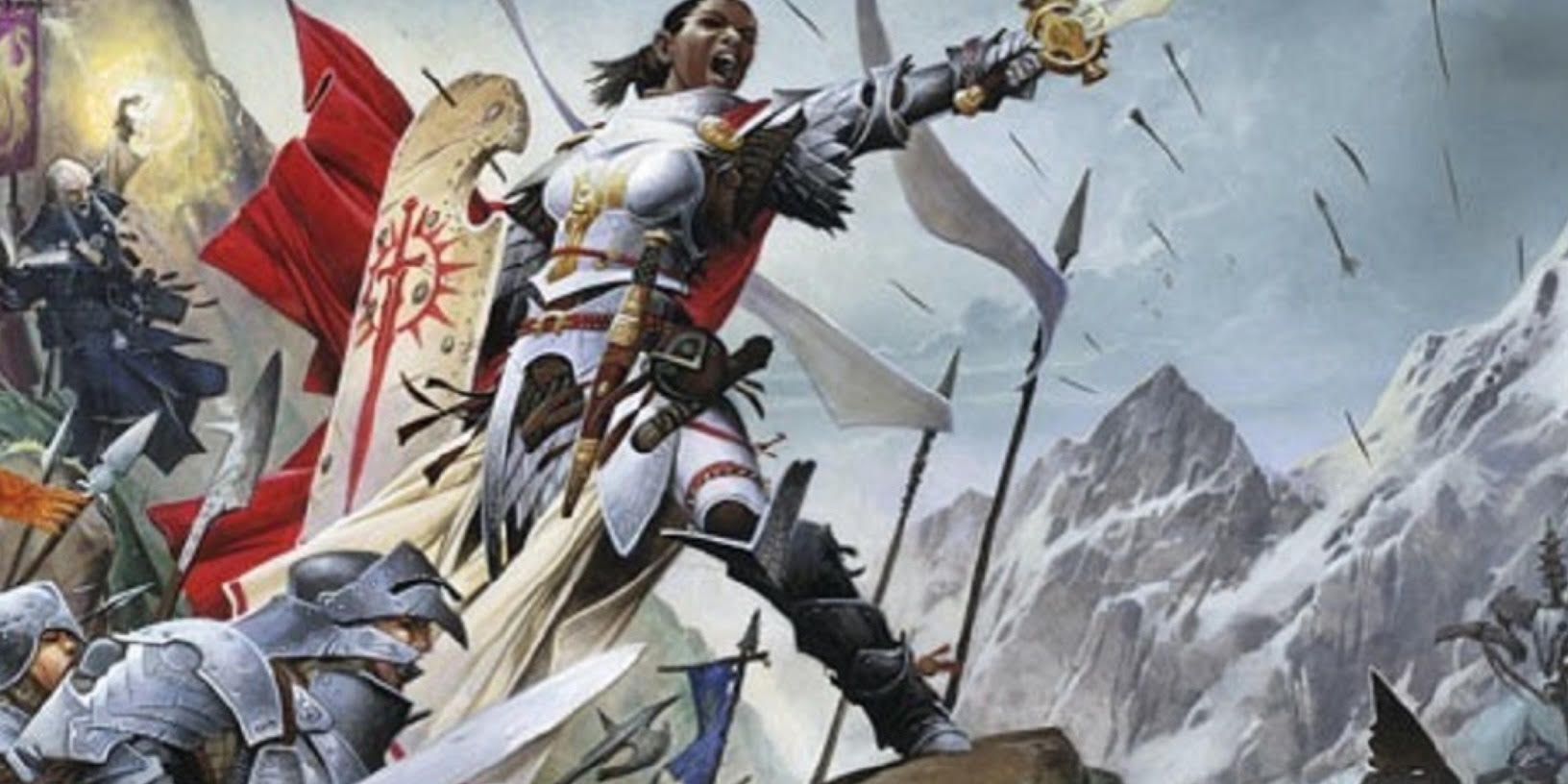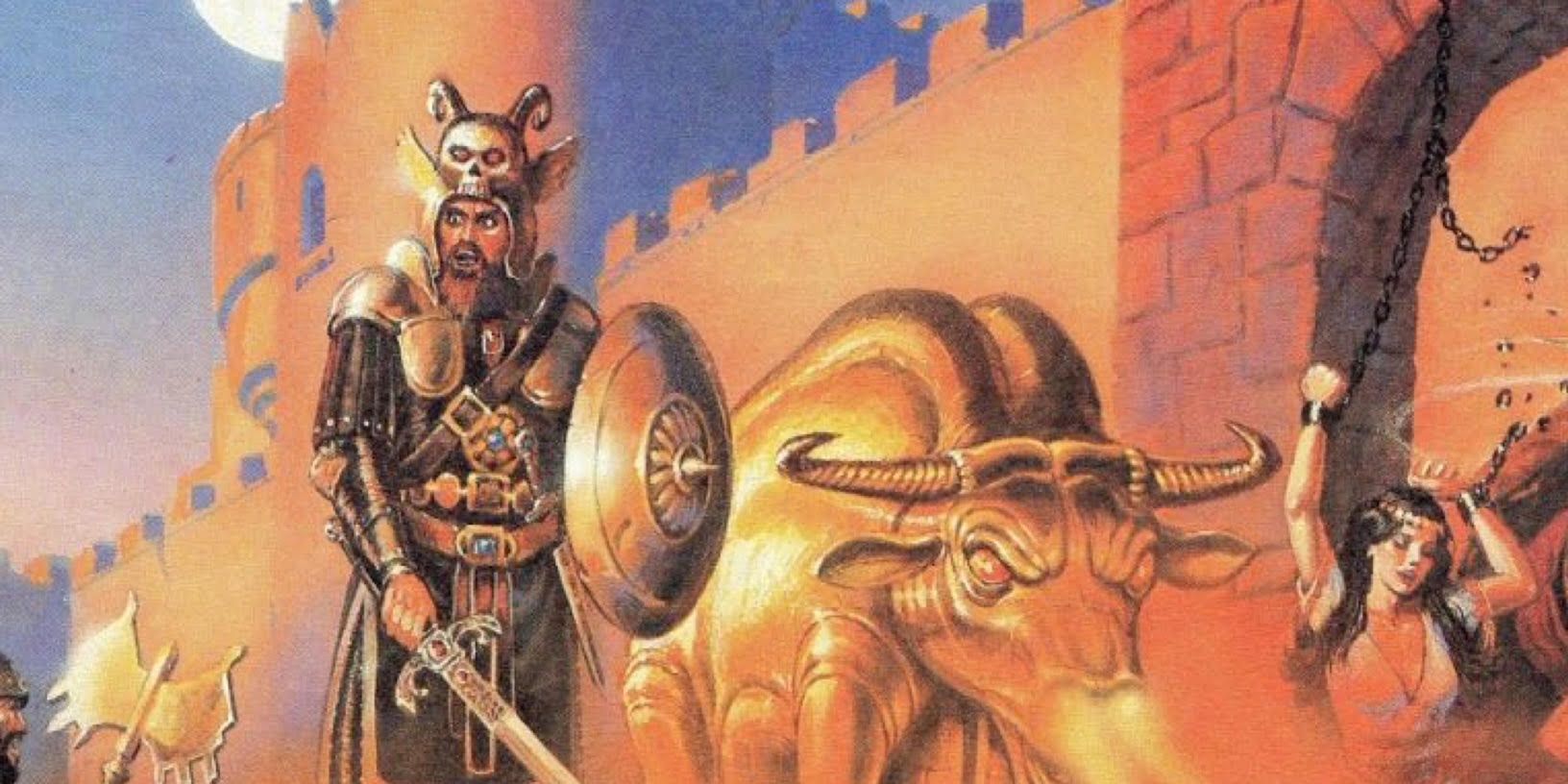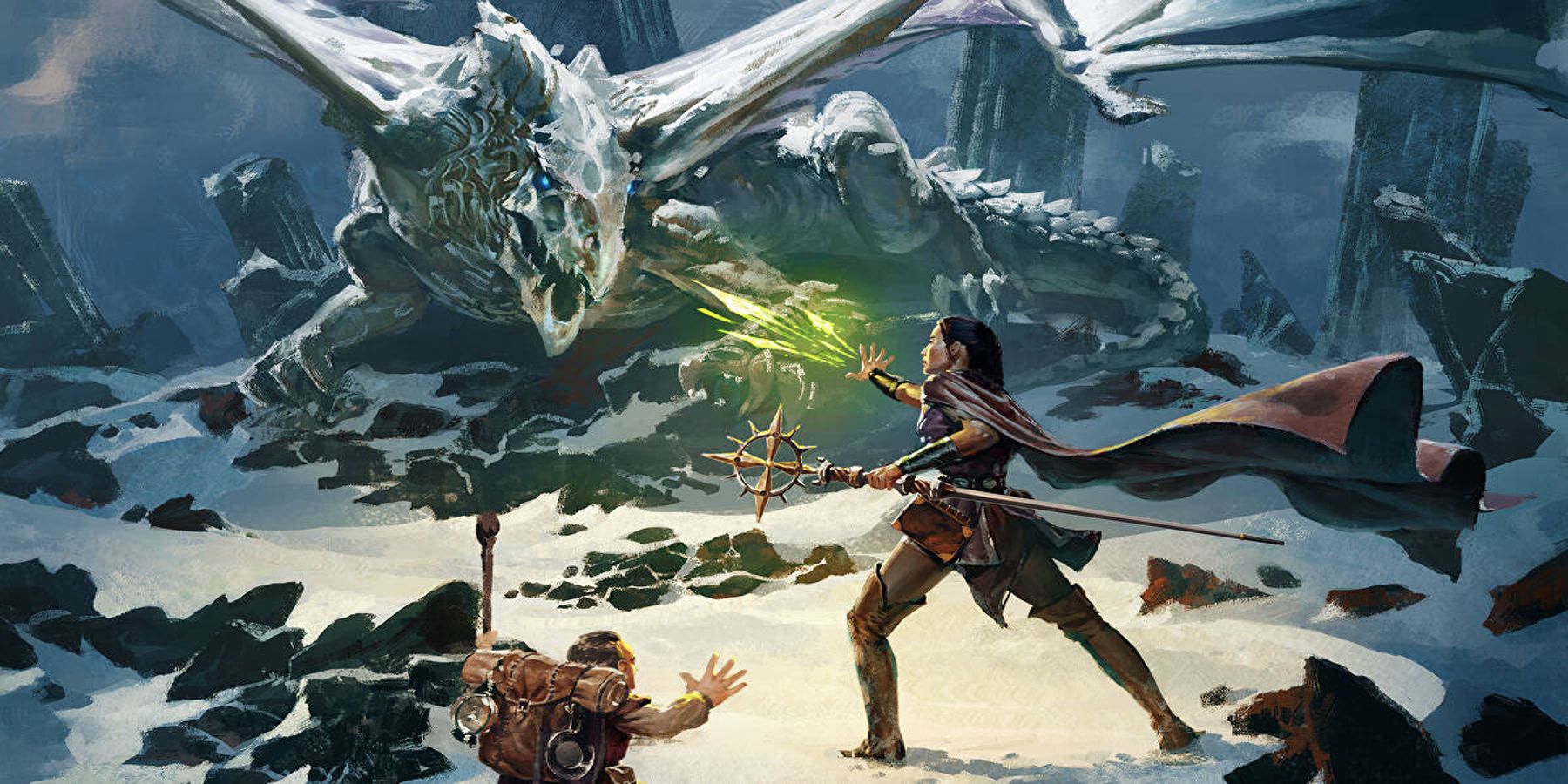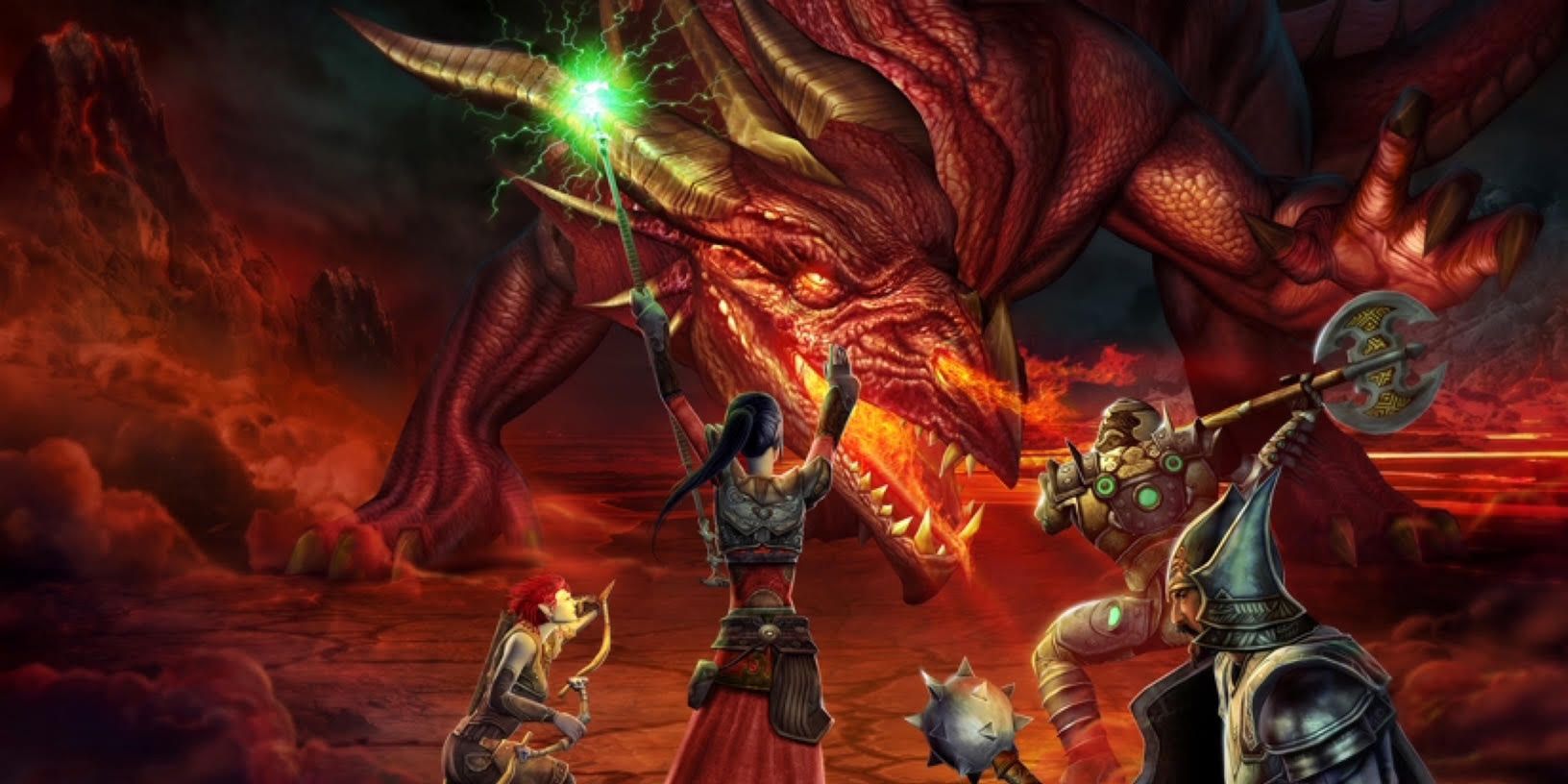It all started here. First appearing in 1974, Dungeons and Dragons sparked decades of epic tabletop RPGs and fantasy sagas in its wake. Upon release, the game had little difficulty in establishing a strong, loyal fanbase, with many becoming quickly amazed by its revolutionary approach to both gaming and the fantasy genre.
Just shy of 50 years later, multiple new editions have been released, frequently modernizing and updating what's come before to keep the game fresh for new generations. Some of these editions have managed to perfect and eclipse the original. Others, meanwhile, were released to more polarizing responses, often getting a little too bogged down in extensive rule sets to be outright fun like the original. Regardless, what has always remained is Dungeons and Dragons' almost immeasurable impact on pop culture as a whole. Now, with multiple editions, films, books, and cult-like fan followings to boast of, it's time to take a look at which D&D edition bests the rest.
7 D&D 4th Edition: Action-Packed But Ultimately One-Dimensional
Sometimes, it's possible to have too much of something good. Such was the case with this 2008-released edition of the long-running fan-favorite RPG that saw many scratching their heads. Essentially trying to shrug off the simulation-focused criticisms of the third edition, the fourth edition spent too much time on combat mechanics at the expense of everything else in a bid to be more gaming-friendly.
While the battle aspects of the game eclipsed every prior edition, the 4th edition ultimately failed in most other areas due to its new mechanics being a poor fit for development beyond action. Class abilities in particular struggled to find cohesion here due to being rendered borderline useless outside of the action. In sum, the 4th D&D edition was an intriguing experiment that didn't quite pay off when compared to other versions.
6 Original D&D: Remains Strong Decades Later
One of the most influential games to ever hit the stands, the original Dungeons and Dragons is arguably the creator of the health points system so many games have abided by since. However, its pencils and paper format can prove rather jarring to modern players.
These days, the 1974 edition of the long-running RPG franchise is jarringly basic in many ways compared to more recent editions, such as its limited number of classes to choose from. However, with a rolling dice, a storyteller, and the relative freedom players have to create their own character, this old-fashioned romp can now serve as a fun, retro experience for fans. All in all, what matters most about the original edition at this point is its monumental historical and cultural impact on the gaming and fantasy mediums.
5 D&D Advanced Edition: Lived Up To Its Name A Little Too Much
In many ways highlighting both the best and the worst aspects of the game, the advanced edition was first released in 1977. From there, players had the option of either a lighter, simpler experience with the original or the complicated, rule-heavy style of the new release.
Arguably the most difficult of all Dungeons and Dragons editions to sift through, the advanced release had a full revamp of the rules that stretched across three books, all written by original game co-creator Gary Gygax. The incredibly complicated, dense rule set is either thrillingly immersive or frustratingly inaccessible depending on the player. Overall, while the advanced edition made a lot of headway into developing into the game fans know today, its near endless info, laborious character builds, and a litany of regulations can make it a tough game to get through.
4 D&D 3rd Edition: Changed Everything In 2000
The year 2000 saw an overhaul of the Dungeons and Dragons system when Wizards of the Coast took over. The Hasbro-owned RPG company made considerable improvements in the character development department.
For players, the third edition's approach to character mechanics allowed more individualism and complexity to take root. The decision to make a more character-oriented iteration stemmed from years of players demanding exactly that, hoping to be able to more fully customize their characters' looks, stylings, powers, backstories, and skills, among other things. As thrilling as this was, the game was still not without some glaring flaws. Much like the advanced edition, the 3rd D&D edition suffers from an over-abundance of regulation, often leading to a complicated playthrough that requires plenty of readthroughs of the rules.
3 D&D 2nd Edition: Solid Middle Ground Between Original And Advanced Versions
In 1989, fans of the original, more basic version of Dungeons and Dragons rejoiced when the second edition provided another new option for players beyond the advanced one. The second edition won considerable praise for being easier to play through in regards to its ruleset whilst still providing an in-depth RPG experience.
One of the most thrilling aspects of the second edition, and one that arguably sets it apart from the rest, is its array of incredible settings. The thrills and spills of campaigns such as Dark Sun, Birthright, and Spelljammer are something that no game since has quite managed to recapture. So immersive are the settings that they manage to make up for some of the more dated aspects of the RPG's gameplay and character development. The second D&D edition was arguably the first to really highlight just how immersive Dungeons and Dragons' storytelling can be.
2 D&D 5th Edition: The Most Eclectic Experience
The closest thing to a complete rendition of the game's numerous top qualities, the 5th edition has proven to satisfy most fans. First released in 2014, the D&D 5th edition has sometimes dealt with the frustrating reputation of being everyone's second favorite iteration.
While such a reputation seems critical at a glance, it's actually a testament to this edition's commitment to trying to satisfy fans of each and every edition in one way or another. In many ways, Dungeons and Dragons has become its own genre within the tabletop RPG world, and this edition captures the thrills of slaying monsters, leveling up in combat, and tackling tough challenges perfectly. It's an accessible, immersive experience that keeps things just simple enough to be welcoming to new players whilst filling out the lore, challenges, and overall world enough to satisfy longtime fans.
1 D&D 3.5 Edition: Pinnacle Of Character Development And Customization
For players who enjoy plenty of breathing room for customization, D&D 3.5 is arguably still the best edition on offer. First released back in 2003, the game won acclaim for neatly correcting the numerous criticisms leveled at the third edition.
Despite the changes, 3.5 is still very much in line with the third edition, essentially providing a perfected rendition of Wizards of the Coasts' vision for the 2000 release. The alterations made to the rules, as well as Dungeon Master's Guide and Monster Manual books, provide players with a fantastic number of skills, feats, crafts, and of course expansive customizations.
The customizing aspect of the game is so rich and in-depth that players can essentially make and do whatever they want within the fantastical world of the game. With mechanics for essentially every conceivable thing the game could offer, 3.5's a masterful entry in the game's long-running history fit for everyone from total novices to seasoned dungeon masters.

